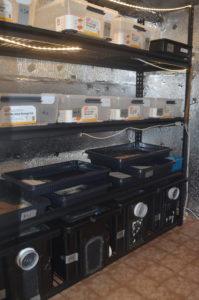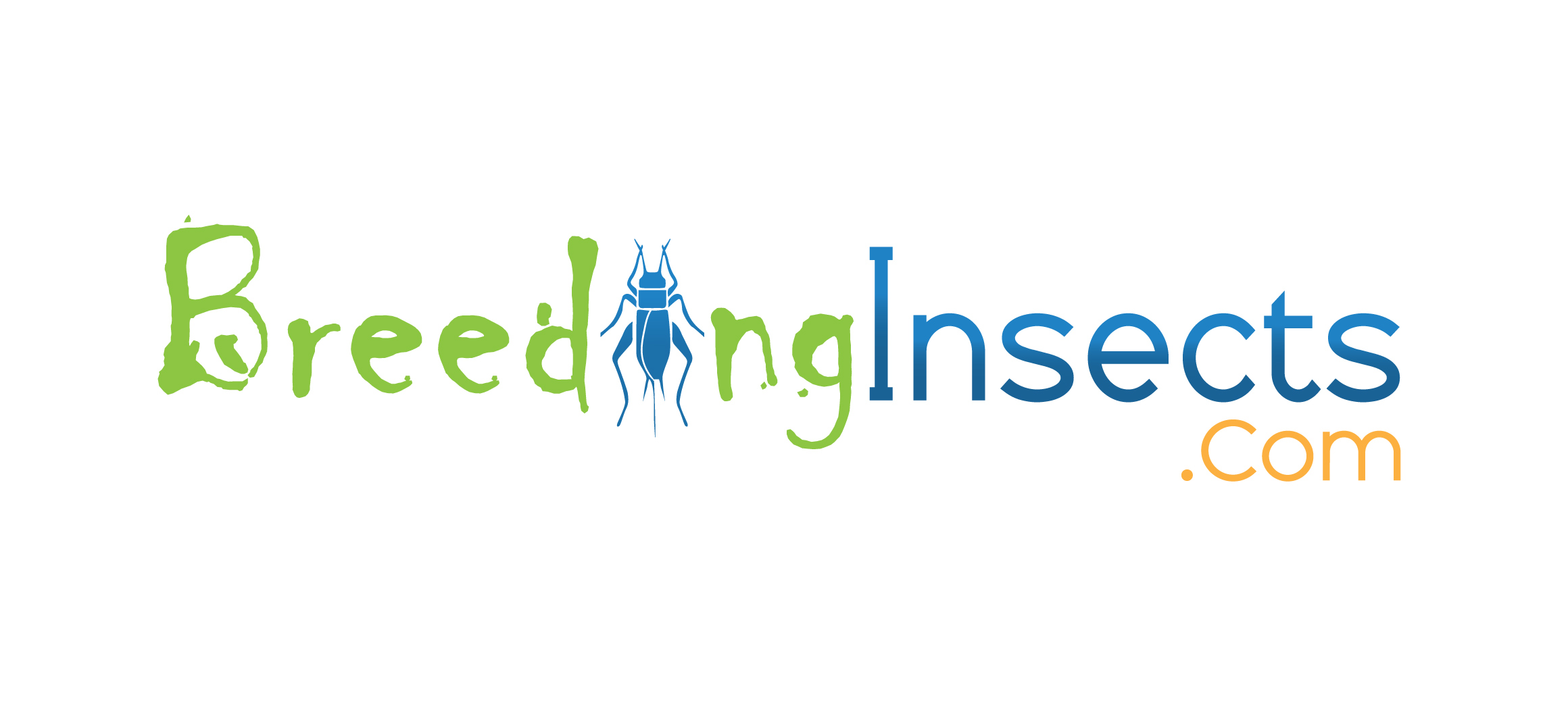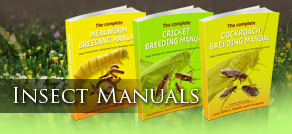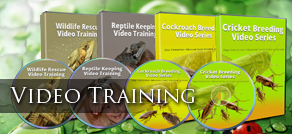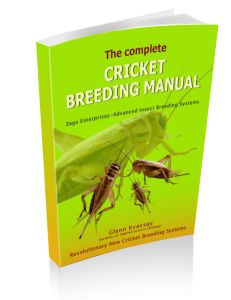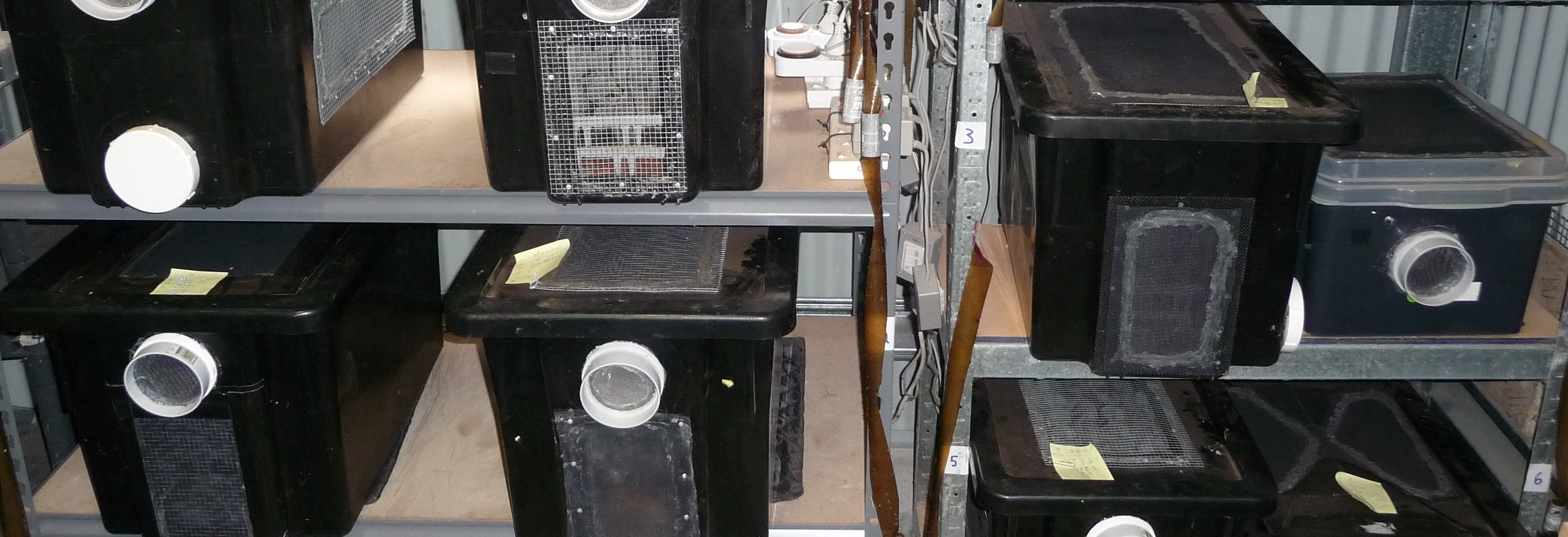
Lesson 8- Pest Management
As crickets are an excellent source of protein, nutrients and water, there are many animals and microorganisms which will take every opportunity to eat your crickets or their eggs. Potential pests include ants, micro flies (flies small enough to move through normal fly screen) and their maggots, larger flies, spiders, cockroaches, geckoes, rodents, bacteria and fungi. Below we look at two common pests and see how how they can affect our colonies. Our books provide a full description of all the major pests and how to tackle each one.
Micro Flies and Maggots
Micro flies (vinegar flies are a common type) are those tiny little flies that you find buzzing around your scrap vegie bin or in your compost. Micro flies lay their eggs in the breeding trays of your colony which hatch into small maggots The other sign to look out for is their egg casts which are little segmented cocoons (approximately 3mm long- “0.12 in”). Do not underestimate these guys, they may be small in size at around 2mm (0.079 in) however they can produce tens of thousands of tiny maggots which can grow to around 10 mm (0.39 in) in size (over three times the size of the adult fly). As the eggs of flies hatch faster than that of a cricket, the maggots will consume the cricket eggs before they hatch.

Interestingly, our Zega Substrate System (small scale production) has no issues with micro-flies, due to its special design. We have a number of methods to prevent micro flies from entering our Zega Batch Breeding system (Medium to Large Scale Production) and we also outline numerous ways to manage them if or when they take hold. With our guide, you will have the knowledge how to win over these guys when they come knocking on your door….
General Diseases
All animals will contract diseases where basic husbandry requirements are not met and their immunity is reduced. With the techniques in this book you will be able to do basic cleaning and provide food/water with minimum maintenance. This will improve the health and reduce diseases.
Other sources of diseases can be accidentally introduced when you bring in new animals from the pet store (particularly to improve genetics see later sections). This has particularly been an issue in the US where entire commercial colonies were destroyed. Carefully inspect the new animals is required to make sure they don’t have genetic defects or small parasites. Genetic defects such as deformed wings or body parts are a sign of disease or inbreeding and these animals should be avoided.
Where a disease has been introduced and taken hold, the best method is to start fresh, and sterilize containers/components with bleach or disinfectant. Bring in new healthy crickets or a new species from a reliable and reputable breeder.
Ants
Ants can be a major threat to a colony as they are able to co-ordinate quickly and attack within minutes or hours. They can be hard to control as they can be small enough to bypass many lid systems or through holes in your screening.
Ants can be managed in a number of ways including; physical and chemical barriers, clever container design and specific management strategies. Unless adequate measures are put in place they will consume all your crickets and will continue to do so until you have an adequate barrier.
Our Manuals Efficient Methods…
There is a lot more to this important topic which you can get from our “Maintenance and Pest Management” sections of our Cricket Breeding Manual:
- 3 different cleaning systems (for both private and large scale production) reduces maintenance to only a few minutes for each breeding container.
- Food and water dispensers can provide food for up to 2 weeks, reducing the need for food/water changes.
- Feeding methods allows 10 containers of crickets are able to be fed wet food in just 60 seconds.
- Systems to remove all cartons and food/water dispensers together for quick and easy maintenance.
- Devices to separate pinheads and larger crickets from detritus and food during maintenance. This allows more animals to be returned back to the colony.
- Detailed information on how to manage all major pests, which often result in the failure of consistent cricket breeding.
- Our clever container design prevents pests from entering, including a special double screen system to keep out micro flies, a major pest species (for large scale production).
- Our “Zega Substrate System” special design, overcomes issues associated with Micro-flies.
- Details how to build “ant exclusion devices” and micro-fly traps to prevent infestations.
- How to maintain genetics and maintain productivity.
To purchase the most comprehensive and best researched insect breeding books, visit our website at Our Products page.
In tomorrow’s lesson we will learn which is the best cricket breeding system for you, and how many crickets you can produce using our methods….
The Worlds most Comprehensive Cricket Breeding Guide
With around 160 pages and 240 color photos our insect breeding book series set the benchmark for insect breeding. To see why our book is the most comprehensive book you can buy on the topic, click Here or to purchase click Here. In this link we will provide you with:
- A Book sample with includes the books contents.
- 50 techniques our books will provide you to save time and effort.
- How to access free videos when you purchase the books
- How to breed crickets and cockroaches using the same materials.
Guided online tour of the Worlds most comprehensive Cricket Book
Why not Turn an Expense Into Income?
For Information and advice on commercial production, Click Here. We have been breeding insects to Zoos, Wildlife carers, pet stores and the public for over 14 years.
We can show you how to build a profitable insect business. See below how you can follow our latest project converting a 20 foot caravan into a profitable insect business.
